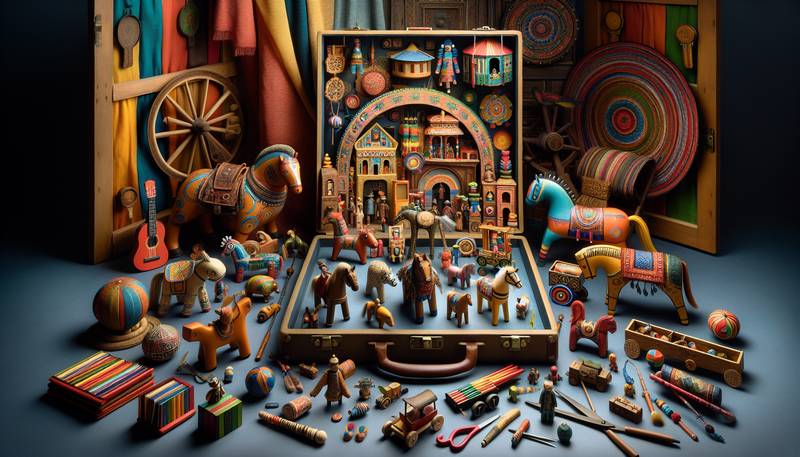Explore Cultures Through DIY Traditional Toys

Why Traditional Toys MatterImagine a world where the only toys are sleek, plastic gadgets that beep and blink like a disco party gone wrong. Not exactly the sunny glade of joyful playtime, is it? Traditional toys aren’t just relics from a bygone era; they offer a fascinating glimpse into different cultures and spark the imagination in ways that modern tech often fails to do. Think of them as time machines—tiny, colorful portals that transport you and your kids back to when fun didn’t require charging cables.To many, these handcrafted wonders represent more than mere entertainment; they carry stories and traditions that have been passed down through generations. It’s like hosting a global potluck where each toy serves as a different cultural dish, just without the risk of an embarrassing cooking mishap. Getting CraftyNow, don’t panic! Crafting traditional toys doesn’t require a Ph.D. in toy-making or a degree in advanced origami (unless you’re trying to build a paper airplane that really flies). With a few basic materials and a sprinkle of creativity, you can whip up toys that not only entertain but also educate. Here’s a handy list of materials you might need:- Wooden blocks (for the aspiring architects)
- Fabric scraps (perfect for the Picasso in your family)
- String (to tie everything together—literally and metaphorically)
- Adhesive (glue, tape, or anything that sticks as well as it holds a grudge)
After securing your supplies, choose a traditional toy to recreate. Whether you opt for a simple wooden top or a more elaborate marionette, the adventure is in the making. Just be ready for a few “creative differences” with your mini co-crafters. From Around the WorldDiving into the world of traditional toys means hopping on a global joyride. Here’s a taste of what different cultures have to offer—without the pesky jet lag:- Kaleidoscopes from India: These mesmerizing tubes filled with colorful glass beads can captivate even the attention span of a goldfish!
- Yoyos from ancient Greece: While they were once a source of entertainment, they also serve as a reminder to stay balanced—especially when teaching your kids about the laws of physics!
- Spinning tops from Peru: Known as “trompos,” these little guys can spin for hours, making you rethink your life choices while you watch them twirl.
- Handcrafted dolls from Scandinavia: These pint-sized friends often come dressed in traditional garb, making them the best-dressed citizens of your living room.
Each toy has its own story, and sharing these tales will make playtime feel like an exciting cultural festival (minus the long lines for the Porta Potties). Learning While PlayingCrafting traditional toys is more than just about keeping your kids busy and out of trouble—it’s an opportunity for learning. Children can develop fine motor skills while trying to tie a knot or paint a wooden figure. Not to mention, discussions about the origins and significance of these toys can unleash a torrent of curiosity.When kids create a toy, they’re not just channeling their inner craftsmen; they’re also getting a bit of hands-on history. And let’s face it, nothing beats a lesson learned through trial and error—much like your uncle’s attempts at grilling.Let the Fun BeginUltimately, the beauty of crafting traditional toys lies in the shared experience. It’s an inviting way to bond, spark creativity, and maybe even ignite a lifelong passion for crafting in your little ones. Back to crafting they go! Expect paint splatters on the walls and delightful chaos across the kitchen table as your young artisans bring their visions to life. And if they get frustrated? Just remind them that even the most skilled toymakers had their fair share of “Oops, that’s not how it’s supposed to look” moments. If they can find joy in the making, the journey will be well worth it. Crafting a LegacyAt the end of the day, traditional toys represent a bridge connecting generations, cultures, and, let’s be honest, a whole lot of fun. By crafting these toys, you’re not just making something physical; you’re building memories, stories, and a legacy that can be passed down—hopefully without the “You better treat it like a museum piece” lecture. Embrace the chance to explore different cultures through DIY projects; after all, a little creativity can make a world of difference, or at the very least, bring a smile to your face—and isn’t that the true goal?
|
|







